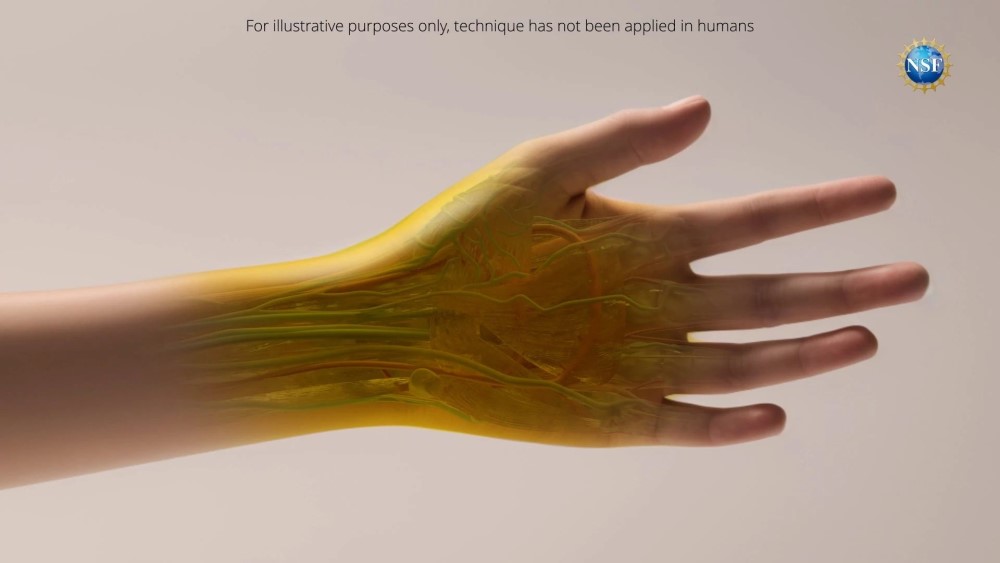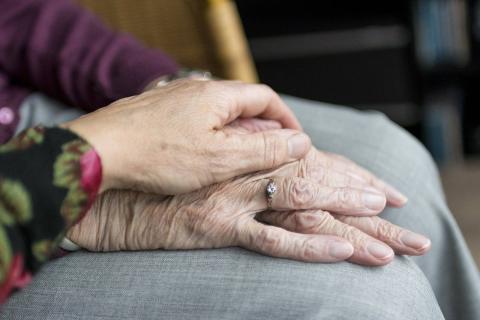New technique succeeds in making living animal tissue transparent
A team of researchers at Stanford University (USA) has developed a technique that makes animal tissues transparent in vivo and reversibly. Based on a food dye, they have tested it topically on mice. According to the authors, who publish their research in the journal Science, “this technology could make veins more visible for blood collection or help in the early detection and treatment of cancer”.

Ilustración de una mano humana tal y como podría aparecer si el nuevo efecto de transparencia resultase eficaz en humanos. De momento, solo se ha probado con animales en laboratorio. Keyi "Onyx" Li/U.S. National Science Foundation
Ratones transparentes - María Victoria Gómez Gaviro
María Victoria Gómez Gaviro
Principal investigator at the Instituto de Investigación Sanitaria Gregorio Marañón
The study is original in that it uses an initially innocuous topically applied dye that 'transparentizes' the skin and peritoneum, leaving visible, above all, muscles and vasculature. The characterization of the tested molecules and the optical tests are of very high quality. In particular, it is easier to see the muscles and vasculature of the organs under the 'window'.
The novelty is the substance used and its use in vivo. This has advantages for preclinical experimentation and surgical models, since it can facilitate the localization of vessels and muscles, which would make it possible to reduce the invasiveness of certain surgeries; invasive procedures such as cutting the skin and manipulating muscles, vessels and organs would be avoided.
One of the limitations lies in not knowing the toxicity of this compound in vivo, collateral effects and medium and long-term effects. The amount of tetrazine in feces and urine has been quantified, but more complete studies are lacking in terms of possible damage to organs under the optical sale created and recovery of the skin.
Ou et al.
- Research article
- Peer reviewed
- Experimental study
- Animals



